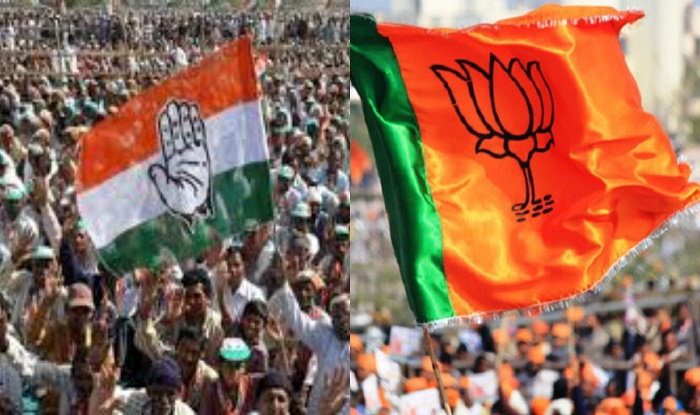
“For the past several years, the BJP has constantly harped on the Gujarat model of development claiming that it was a perfect formula for growth, and it could be extended to the rest of the country. But in the meantime, Rahul Gandhi and his party upped their game in Gujarat, seeking to puncture the mythology built around the Gujarat model with pointed attacks on the government’s economic policies and the inadequate development in the Prime Minister’s home State”, says the author.
More than three years after the Bhartiya Janata Party (BJP) stormed to power at the Centre with an unprecedented victory, it finds itself on the defensive, especially on the economic front. This defensiveness extends to the political front as well, evident in the Gujarat election campaign where after 19 years of unbroken rule, the party is facing a serious challenge.
Tell-tale signs
Three developments signal that political equations in the country may well be in a state of flux. First, the rejection of the Akhil Bharatiya Vidyarthi Parishad (ABVP) in recent university elections indicates a strong sense of discomfort with the BJP’s politics among the youth who gave the party solid support in the 2014 Lok Sabha election. Second, the Election Commission’s decision to de-hyphenate the Himachal Pradesh and Gujarat Assembly election notification which allowed the Central and State governments more time to frantically announce sops, including slashing rates of the goods and services tax (GST) on select items, loan waivers for farmers, and benefits for government employees. Third, Prime Minister Narendra Modi’s attempt to pass the blame for the disruptive introduction of the GST and its shambolic implementation on the Congress implies that something is really changing on the ground.
For the first time, he argued in favor of collective ownership of the GST after taking sole credit for its introduction in a midnight session of Parliament, saying that all State governments, including of the Congress, are responsible for the GST.
This has created opportune conditions for the Congress Party to come out of its self-imposed hibernation since 2014. It suddenly appears to be eager, even aggressive, in taking on the BJP on its home turf. This coincides with a rising discontent across the country over the economic slowdown and growing job losses. The double blunder of demonetization and GST seems to have infused new life into Congress vice-president Rahul Gandhi’s floundering political career just weeks before his likely elevation as the party president.
The Gujarat election, which was expected to be an easy win for the BJP, has unexpectedly developed into a possibly close and certainly engrossing contest.
For the past several years, the BJP has constantly harped on the Gujarat model of development claiming that it was a perfect formula for growth, and it could be extended to the rest of the country. But in the meantime, Rahul Gandhi and his party upped their game in Gujarat, seeking to puncture the mythology built around the Gujarat model with pointed attacks on the government’s economic policies and the inadequate development in the Prime Minister’s home State.
Against this backdrop, the Congress put the BJP on the back foot with its Gujarat campaign highlighting joblessness, decelerating economic growth and poor social infrastructure through the hashtag “Vikas Gando Thayo Chhe” (development has gone crazy).
Where is Vikas?
It has gone all out since then to broadcast and publicize the social media campaign captured by the image of an upturned state transport bus with its wheels off. While the Gujarat model proved extremely persuasive in 2014, three years later people seem to have a more skeptical take on it and what lies beneath it. Despite three decades of high growth rates, Gujarat’s performance on social indicators has not improved significantly; this has damaged its credibility.
For the first time in more than two decades, people are freely criticizing the ruling dispensation, mocking the Gujarat model through jokes, caricatures, and parody. One witty message posted on Twitter sums up the popular take on the model: “In a conversation, on seeing the railway tracks submerged in water, a person asks why Vikas is not visible. He gets the reply that as Vikas is sitting in the bullet train, he is invisible.”
The growing number of humorists poking fun at official policies has struck a chord among people. It forced BJP president Amit Shah to urge the State’s youth not to fall prey to the Congress’s anti-BJP propaganda on social media. Thanks to this campaign, the ruling party is facing its toughest fight in State, in sharp contrast to the 2012 Assembly elections, for instance, when Mr. Modi had made powerful use of social media in his campaign against the Congress.
Aside from the advantages of political humor, the Gujarat campaign underlines the effectiveness of a State-specific approach. Ensuring that the Gujarat election remains a State battle, the Congress has fashioned its campaign around governance, law and order and failed promises of the Gujarat model, and questioning the leadership of incumbent Chief Minister Vijay Rupani and his predecessor Anandiben Patel while targeting specific social constituencies. Finding itself on the defensive on issues like nationalism, terrorism and corruption, the Congress has shifted the discourse to development failures to preempt Hindu consolidation; it is cornering the government on the economic front and at the same time shunning cultural and emotional issues. The Congress is keen to shed its pro-minority image and deflect attention from Hindu-Muslim tension in order to prevent the BJP from diverting the simmering discontent towards the familiar territory of minority appeasement and the projection of Congress as a Muslim-centric party.
However, while drawing attention to the government’s economic failures, the Congress has not offered any alternative model of growth. In his speech at the University of California, Berkeley in September, Mr. Gandhi said the Congress can steer a new development model in the future and that “creating jobs in a democratic environment” is vital for inclusive growth. But what this new model is has not been spelt out so far. A critique of economic failures is not enough; a party must shape it with a social and economic agenda of its own. Also, the weakness in the Congress’s organization remains glaring: it has no strong State leader and no organization. The party has been rendered organizationally quite weak in Gujarat over the past two decades; it needs a dedicated cadre of grassroots workers and an organization to fight the formidable RSS/BJP election machine, which it does not have, leave alone the capacity to micro-manage elections as this political machine can.
Map of disaffection
To harvest the collective discontent in the State, the Congress has reached out to disaffected groups, including the Patidars, by attempting to build a social coalition with like-minded civil society leaders in Gujarat against the BJP.
The new coalition is pivoted on socio-economic issues, and not identity politics. That’s the new strategic dimension of the campaign. Hampered by the lack of a strong local face, it revolves around bolstering the anti-BJP sentiment whipped up by the troika of young leaders: Alpesh Thakor, Jignesh Mewani and Hardik Patel. In theory, the support of OBCs, Dalits and Patels, represented by these three leaders, along with that of Adivasis, can give the Congress an edge over the BJP; in any event, their support has helped to create a public mood against the BJP.
It is too early to say what electoral dividends this fascinating campaign will pay, but one thing is clear. It has unsettled and disrupted the official narrative about the much-hyped Gujarat model of development that paid rich dividends for Narendra Modi in the 2014 elections.
(The author is Professor Emerita, Centre for Political Studies, Jawaharlal Nehru University)
